
This monument was constructed to memorialize George Washington, the 1st U.S. President, Founding Father, co-creator of the Declaration of Independence, politician, and military leader among other things. He is viewed as one of the most prominent figures today in the United States because he is the one who set a majority of the rules that are still followed today and set the way of life that is still followed to this day.
Background Information
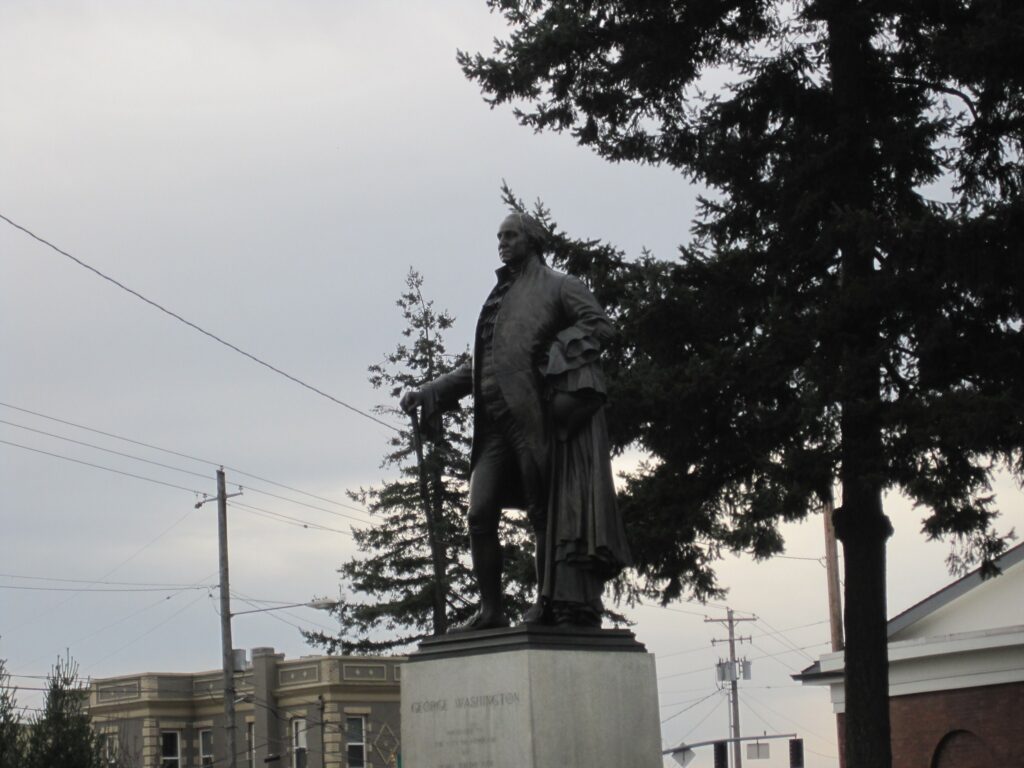
The statue was put up on the 150th anniversary of the Declaration of Independence which was built by Pompeo Coppini and paid for by Henry Waldo Coe. People were mostly indifferent to the statue as there were not many reactions to its construction. The reactions that were voiced, were positive. Below is an image from the Malvern Times on July 1st, 1926.
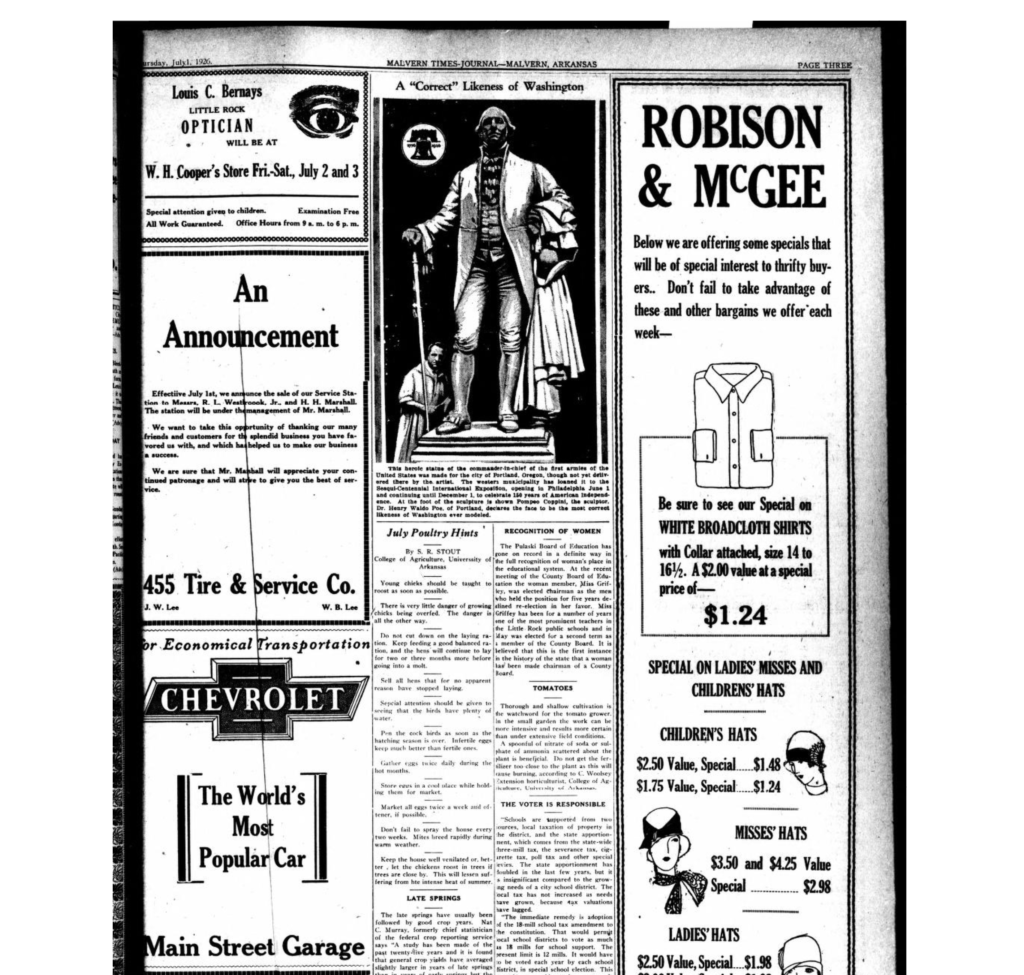
What’s The Message?
There are a couple of messages that this statue sends. It is bronze since that is the most popular material to make a statue out of, but what is important is his stance. He is standing confident and his posture is well-suited for a man of power. He has a cane not because he needs the support, but most likely to show his power as a cane can be a status symbol for people of powerful positions, such as a king. In his other hand, he is holding a coat and hat as if he is retiring and looking one last time at the fruits of his labor as he steps down. He seems to be reminiscing and his face is stern but also at peace. He has his back straight and seems to be pondering everything that led him to stand where he is now. He is elevated like his status and sits high above the ground. The marble he stands on seems bland intentionally to not take away from George Washington himself. It is thick and he stands confidently on the slab as if nothing could bring him down. That was not true as protestors later took him down.
Pompeo Coppini
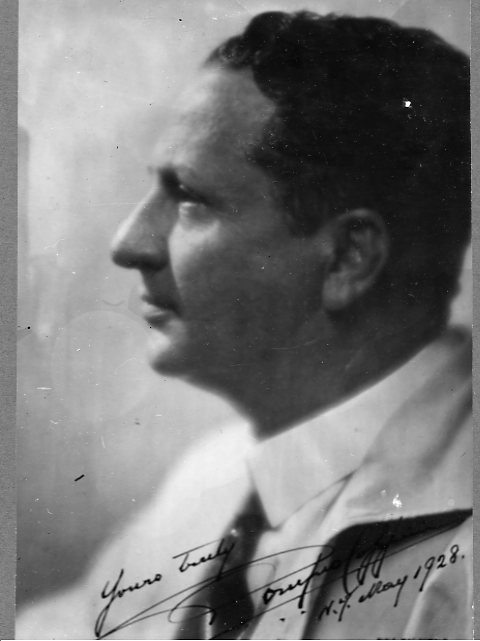
The sculptor of this statue, Pompeo Coppini, was an Italian sculptor who immigrated to the United States in March 1986, later becoming a citizen in 1902. While growing up in Florence, Italy, he got his start making ceramic horses in the shape of whistles at the age of ten! As he got older, he would make knockoffs of famous artworks and by the age of sixteen he would then study at Accademia dell’Arte del Disegno which translates to “Academy of the Arts of Drawing.” Once he arrived to the United States, he started started making wax figures for a wax museum in New York. He later married one of his models, Elizabeth di Barbieri. Coppini ended up making three distinct George Washington statues in his career. The first was in Mexico that was built in 1912 and was later toppled over in 1914 by an invasion led by Veracruz, the second is the Portland statue that was toppled over by BLM protestors, and the third one was in Austin, Texas. The first one was replaced by another one in 1916, the second one is being maintained in a museum but does not have a date when it will be put back, and the third one is still standing. Below is a video of the Portland, Oregon statue being taken down.
Henry Waldo Coe
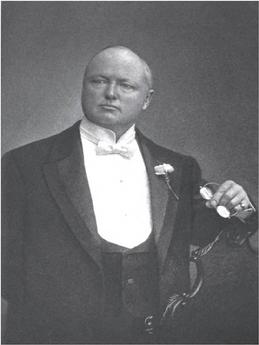
Henry Waldo Coe was a politician and physician that was prominent in political and financial affairs. He personally knew Theodore Roosevelt and was friends with him until he passed; he would often have dinners with him at the White House. Henry was also president, vice-president, and director of various national banks in the northwest area. He commissioned the George Washington statue that is in Portland, alongside 3 other statues which were of Joan of Arc, Theodore Roosevelt, and Abraham Lincoln. All of the statues he commissioned were taken down except for the one of Joan of Arc.
George Washington – The Slave Owner
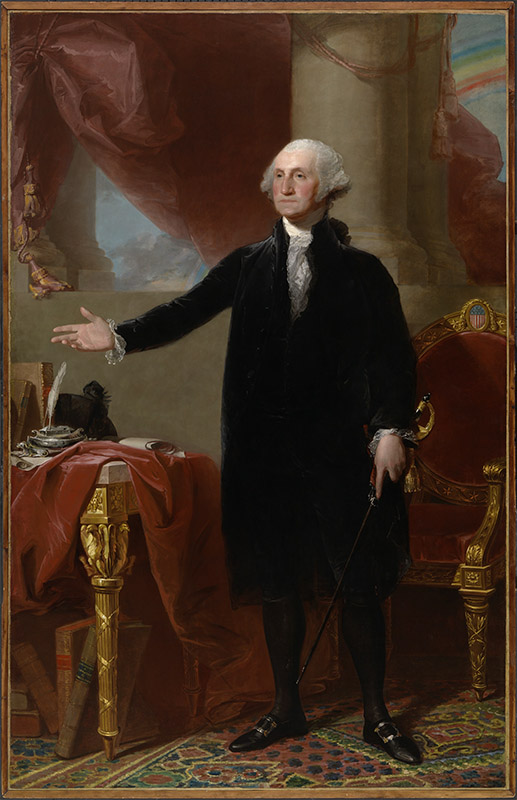
George Washington was a slave owner in his time and this is the main reason that the statue of him was taken down in Portland, Oregon. During his lifetime he owned approximately 577 slaves. Throughout his lifetime he did transition from the ideology of slave ownership being acceptable to seeing it as immoral. This epiphany came to him after changing the crops he grew on his plantations from tobacco to that of grains. Information on how he treated his slaves is conflicting. On the one hand, some say he was respectful towards his slaves and other sources say that he was inhumane towards them.
The Positive
Those that are positive state that he would allow slaves from other plantations to visit each other if they were family and that they would get days off on Sundays and any other religious holidays. For Washington, whipping was a last resort and the overseers that watched over the plantations would often need written consent from Washington in order to whip the slaves. Instead, he would opt for a reward system that promoted good work and intense labor. This would give the slaves the opportunity to earn better clothes, better blankets, and sometimes Washington would even pay the slaves. On his plantation, he would also have younger and older slaves which resulted in his operations working at a loss. After his wife’s death he would end up freeing all his slaves.
The Negative
Those who choose to speak negatively on Washington’s slave ownership say that he would give the bare necessities for his slaves like minimum amounts of food, barely usable clothing, no blankets to sleep on, and that the slave’s living quarters were not well maintained. Since he grew up in a time of slavery he already had this ideology of racial superiority. This gave him the idea that he as a white man was leagues ahead compared to black people. During his presidency he supposedly rotated out his slaves as to not give them freedom. He would do this by sending slaves back and forth from the Capital and Mt. Vernon to avoid an abolition act that freed slaves after 6 months of residency. So, he would rotate his slaves out before those 6 months as a loophole to the act and that method allowed him to keep him his slaves and deny them their freedom.
Where Is It Now?


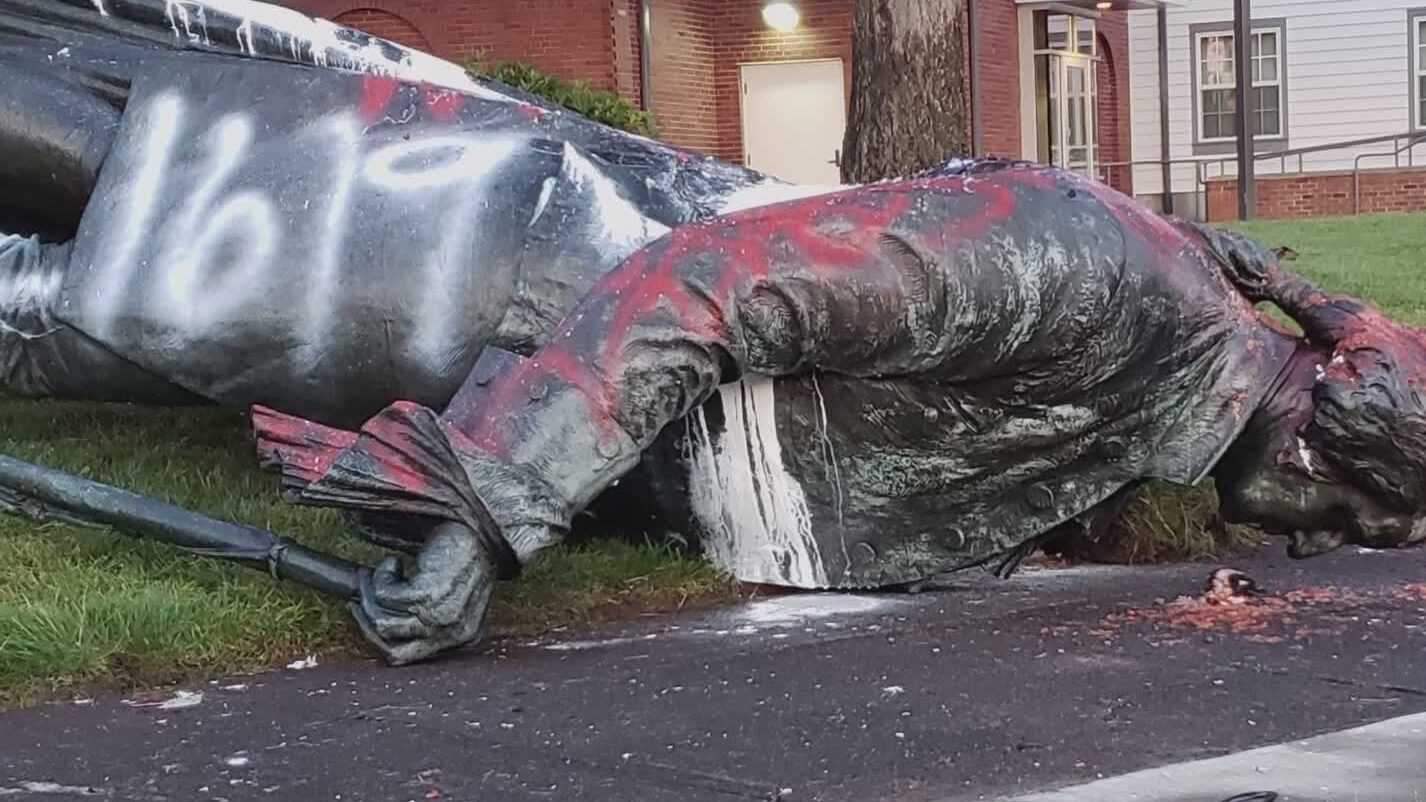
The bronze George Washington statue in Portland, Oregon is currently in storage and being repaired after being toppled by protesters. This is also a reflection of what people think today of the man and the statue today. On top of toppling the statue, it is also defamed with graffiti that makes reference to him being a slave owner. Some of the grafitti on the statue says things like, “Genocidal Colonist”, “You’re on native land”, “BLM”, “Big Floyd”, and “1619.” The year 1619 is a reference to the first year that slave ships arrived to the United States with the first shipment of slaves. The statue is currently part of the City of Portland and Multnomah County Public Art Collection and cannot be reinstalled at its original location near the German American Society. It is currently unknown when it will be put up again.
Sources
- https://www.nytimes.com/interactive/2019/08/14/magazine/1619-america-slavery.html
- Malvern times=journal. (Malvern, Ark.), 01 July 1926. Chronicling America: Historic American Newspapers. Lib. of Congress. <https://chroniclingamerica.loc.gov/lccn/sn89051241/1926-07-01/ed-1/seq-3/>
- https://www.oregonlive.com/portland/2020/06/george-washington-statue-toppled-during-22nd-consecutive-day-of-portland-protests.html
- https://www.cbsnews.com/news/protesters-portland-oregon-topple-george-washington-statue/
- http://www.mandanhistory.org/biographiesak/henrycoe.html
- https://www.findagrave.com/memorial/59684309/henry-waldo-coe
- https://www.tshaonline.org/handbook/entries/coppini-pompeo-luigi
- https://katu.com/news/local/george-washington-statue-in-portland-torn-down-protests-continue
- https://www.waymarking.com/waymarks/WMJKC
- https://www.opb.org/article/2024/01/05/the-fate-of-portlands-toppled-monuments-hits-a-snag/
- https://www.cnn.com/2020/06/19/us/portland-george-washington-statue-toppled-trnd/index.html
